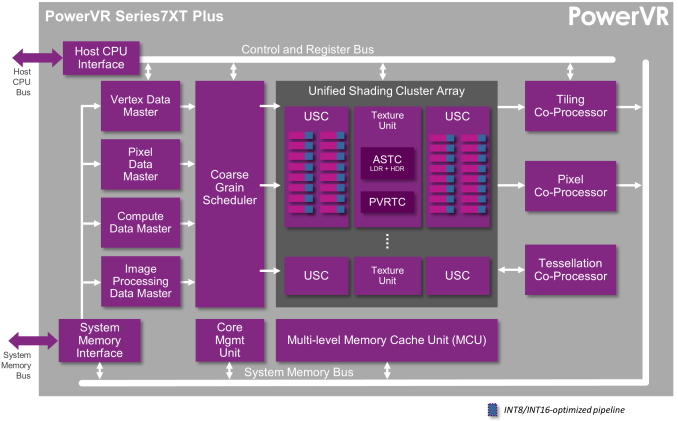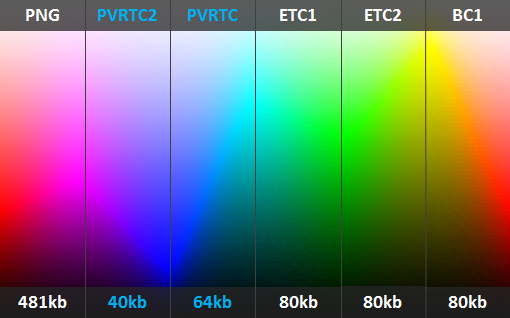Apple To Develop Own GPU, Drop Imagination's GPUs From SoCs
by Ryan Smith on April 3, 2017 6:30 AM ESTImagination: Patents & Losing an Essential Contract
As for Imagination, the news is undoubtedly grim, but not necessarily fatal. Imagination has never hidden the fact that Apple is their most important customer – even labeling them as an “Essential Contract” in their annual report – so it’s no secret that if Apple were to leave Imagination, it would be painful.
By the numbers, Apple’s GPU licensing and royalties accounted for £60.7M in revenue for Imagination’s most recent reporting year, which ran May 1st, 2015 to April 30th, 2016. The problem for Imagination is that this was fully half of their revenue for that reporting year; the company only booked £120M to begin with. And if you dive into the numbers, Apple is 69% of Imagination’s GPU revenue. Consequently, by being dropped by Apple, Imagination has lost the bulk of their GPU revenue starting two years down the line.
| Imagination Financials: May 1st, 2015 to April 30, 2016 | |||
| Company Total | GPUs Total | Apple | |
| Revenue (Continuing) | £120M | £87.9M | £60.7M |
| Operating Income | -£61.5M | £54.7M | |
The double-whammy for Imagination is that as an IP licensor, the costs to the company of a single customer is virtually nil. Imagination still has to engage in R&D and develop their GPU architecture and designs regardless. Any additional customer is pure profit. But at the same time, losing a customer means that those losses directly hit those same profits. For the 2015/2016 reporting year, Apple’s royalty & licensing payments to Imagination were greater than the profits their PowerVR GPU division generated for the year. Apple is just that large of a customer.
As a result, Imagination is being placed in a perilous position by losing such a large source of revenue. The good news for the company is that their stakes appear to be improving – if slowly – and that they have been picking up more business from other SoC vendors. The problem for Imagination is that they’ll need a drastic uptick in customers by the time Apple’s payments end in order to pay the bills, never mind turning a profit. Growing their business alone may not be enough.
Which is why Imagination’s press release and the strategy it’s outlining is so important. The purpose of Imagination’s release isn’t to tell the world that Apple is developing a new GPU, but to outline to investors and others how the company intends to proceed. And that path is on continued negotiations with Apple to secure a lesser revenue stream.
The crux of Imagination’s argument is that it’s impractical for Apple to develop a completely clean GPU devoid of any of Imagination’s IP, and this is for a few reasons. The most obvious reason is that Apple already knows how Imagination’s GPUs work, and even though Apple wouldn’t be developing a bit-for-bit compatible GPU – thankfully for Apple, the code app developers write for GPUs operates at a higher level and generally isn’t tied to Imagination’s architecture – those engineers have confidential information about those GPUs that they may carry forward. Meanwhile on the more practical side of matters, Imagination has a significant number of GPU patents (they’ve been at this for over 20 years), so developing a GPU that doesn’t infringe on those patents would be difficult to do, especially in the mobile space. Apple couldn’t implement Imagination’s Tile Based Deferred Rendering technique, for example, which has been the heart and soul of their GPU designs.
However regardless of the architecture used and how it’s designed, the more immediate problem for Apple – and the reason that Imagination is likely right, to an extent – is replicating all of the features available in Imagination’s GPUs. Because Apple’s SoCs have always used GPUs from the same vendor, certain vendor-specific features like PowerVR Texture Compression (PVRTC) are widely used in iOS app development, and Apple has long recommended that developers use that format. For their part, Apple is already in the process of digging themselves out of that hole by adding support for the open ASTC format to their texture compression tools, but the problem remains of what to do with existing apps and games. If Apple wants to ensure backwards compatibility, then they need to support PVRTC in some fashion (even if it’s just converting the textures ahead of time). And this still doesn’t account for any other Imagination-patented features that have become canonized into iOS over time.
Consequently, for Imagination their best move is to get Apple to agree to patent indemnification or some other form of licensing with their new GPU. For Apple it would ensure that nothing they do violates an Imagination patent, and for Imagination it would secure them at least a limited revenue stream from Apple. Otherwise Imagination would be in a very tight spot, and Apple would face the risk of patent lawsuits (though Imagination isn’t making transparent threats, at least not yet).












144 Comments
View All Comments
madwolfa - Tuesday, April 4, 2017 - link
Indeed. Imagine the cost savings on the patents litigation alone.prisonerX - Tuesday, April 4, 2017 - link
Then imagine the cost of the stockholder litigation and subsequent payouts.NetMage - Tuesday, April 4, 2017 - link
If Apple cared, they could buy them at pre-announcement pricing but if they cared, they would own them already.Henry 3 Dogg - Monday, April 3, 2017 - link
This is not about shaving a few cents off a chip.Apple produced it's own ARM cores to have THE fastest, most efficient ARM cores.
Apple want something from their GPU that Imagination simply wasn't providing them with.
And it could be as simple as control.
- Knowing that new design releases are synchronised to their own product releases, to ensure that they are first to market.
- Knowing that their requirements of the GPU aren't giving hints to the outside world about what they are doing.
- Maybe just that IT's rate of spend on it's GPU R&D, and therefore progress, was just less than Apple wanted.
But I think that it's going to be something more than that.
I suspect Apple want one, very scalable GPU design that they can use across their product range.
And I suspect that they want fast hardware ray tracing for VR applications.
And I suspect that they want power sipping mundane 2D graphics.
And I suspect there are DSP things that they want to do for their Camera[s].
And I suspect that they want to integrate these things VERY closely together.
So closely, that it might hint where they are off to.
Torrijos - Wednesday, April 5, 2017 - link
I think this might be on the nose...It isn't an accident that Apple also invited journalists to announce their commitment to the pro market...
For me the first step will be the iMac, (iMac Pro was even mentioned)...
I think Apple wanted control because they felt that by the time they adapted the third parties GPUs to their designs, they were outdated and underpowered.
We'll probably see this year refreshed iMacs with a GPU made by Apple. Scaling between models pricing.
OpenGL, OpenCL but mainly Metal (dsp for certain task, management of screen refresh rates etc), maybe HSA (that is wishful thinking though).
Still they will hopefully allow better handling of external GPUs though (for CUDA).
Then when the data is in, they'll be able to finalise the design of the GPUs for the 2018 Mac Pros, in case anything was wrong or unexpected. Apple in the "i" era has been very iterative with great success.
Cliff34 - Monday, April 3, 2017 - link
Maybe they want to get into the VR arena and want to develop it in-house rpSupaNova - Wednesday, April 5, 2017 - link
Nope Apple has been designing its own GPU for a while, this is just the confirmation.So those looking for huge increases in speed going forward are going to be disappointed
EnzoLT - Monday, April 3, 2017 - link
I feel like this is more of a negotiation tactic than anything.sagor808 - Tuesday, April 4, 2017 - link
"We’re making a documentary about how wearable technology can help improve fitness, overall health and overcome obstacles. We’re looking for stories that are heartfelt, make you smile, that are surprising and unique. Simply losing weight isn’t enough for the stories we’re looking for. There needs to be a personal, mesmerizing, and unique aspect to each story that draws you in and makes you understand how technology can enhance your life."Tell your story.
prisonerX - Tuesday, April 4, 2017 - link
"I stuck my fitness band up my ass, and it still worked!"That's my story.